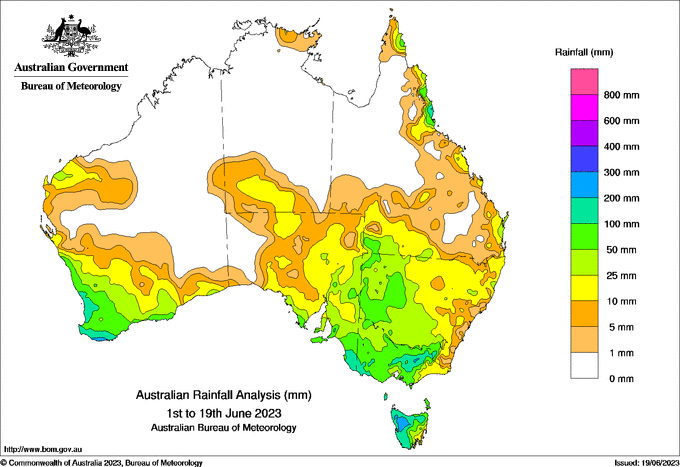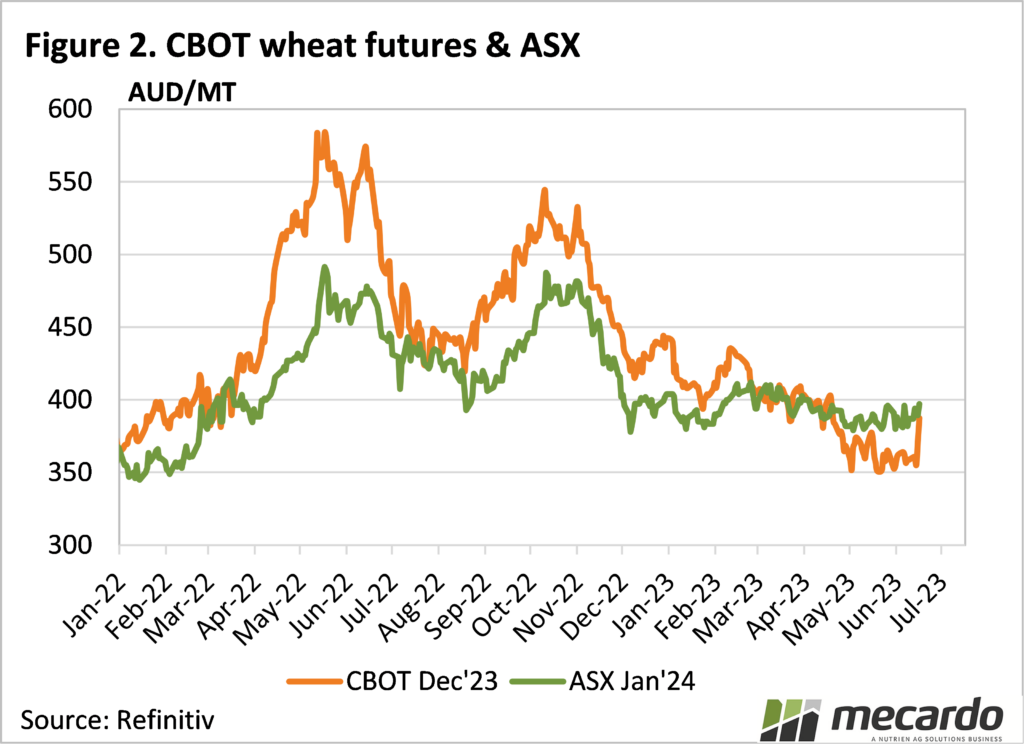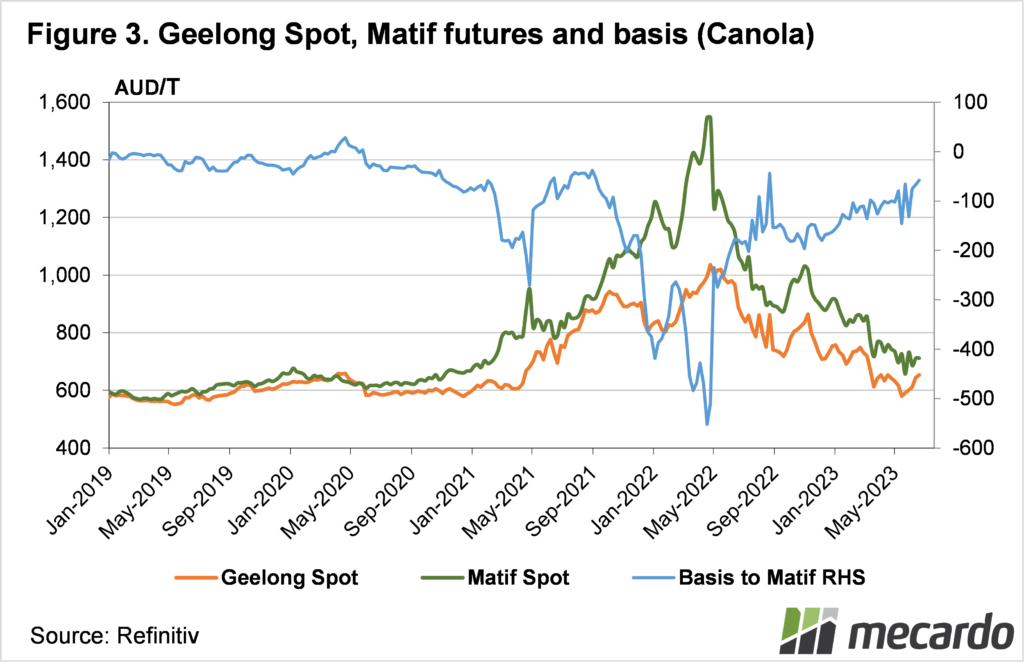El Niño is supposedly on alert, and with it, a wet summer in the US, and a dry winter here. The last week has seen the opposite. As outlined in Friday’s comment, the US is dry, and some cropping regions here have received good rains.
While the US is waiting for rains to give the corn crop a boost, growers here were waiting on rains to kick off the winter. Last week there were some good falls in key cropping regions of Victoria, South and Western Australia (figure 1). The big breadbasket of northern and central NSW missed out, but the rains were enough to put a halt to basis increases.
The dry weather in the US has seen Chicago Soft Red Wheat (SRW) futures jump higher over the last fortnight. Figure 2 shows Dec 23 SRW and the ASX Jan 24 Wheat Futures. SRW has jumped $33/t in our terms since the start of the month, from lows around $350/t to $387/t on Monday.
Over the same period ASX futures have seen some of the rise, but have only gained $11/t, trading at $397/t on Monday. The impact on ‘basis’ or the spread between ASX wheat and SRW has been a significant tightening. From close to $30, basis is back to $10.
The rain seen locally this week might have encouraged some selling of old and new crop, with little regard for rising prices in the US. This often happens when international prices rise sharply, our prices take a little longer to respond. This time it has coincided with rain.
International canola prices have also seen a solid increase over the last fortnight. Figure 3 shows MATIF Rapeseed has gained $60/t or nearly 10% on the back of rising soybean values. Historically a 10% rise is massive, but these days it is just getting the price back to where it was two months ago.
Locally canola values have been creeping higher relative to MATIF, with basis now back at $62/t. This is much closer to the historical norm for average seasons, and is likely driven by forecasts of a dry growing season.
What does it mean?
For grain producers it is not a great time to sell physical or ASX wheat futures, with tightening basis it makes SRW more attractive. For canola it is a little different, but we doubt anyone is thinking about forward selling canola with the current seasonal uncertainty. Given we are still at a solid discount to international prices, we don’t blame them.
Have any questions or comments?
Key Points
- Dry in the US and rain in key cropping regions here is opposite to normal El Niño impacts.
- Rising international wheat prices have seen local wheat basis weaken.
- It’s not a good time to be using local pricing tools, futures would be preferable.
Click on figure to expand
Click on figure to expand
Data sources: USDA, Refinitiv, Mecardo















